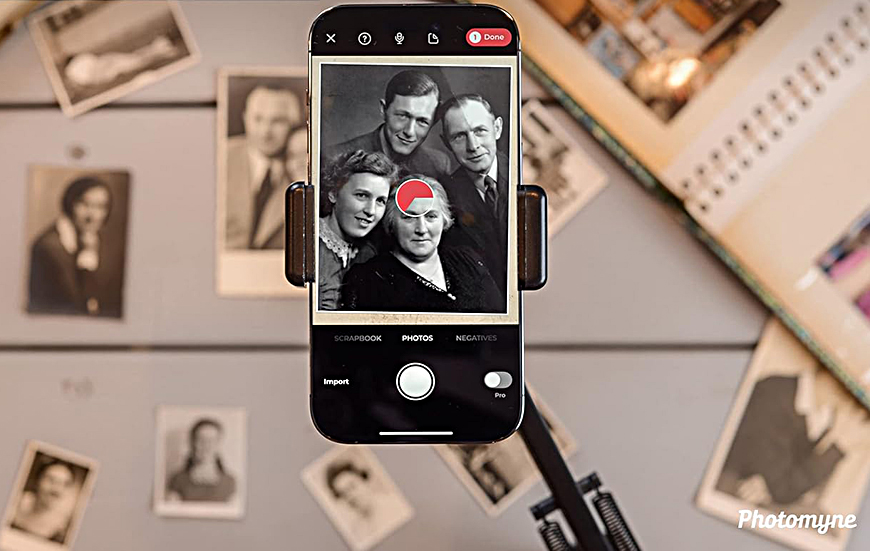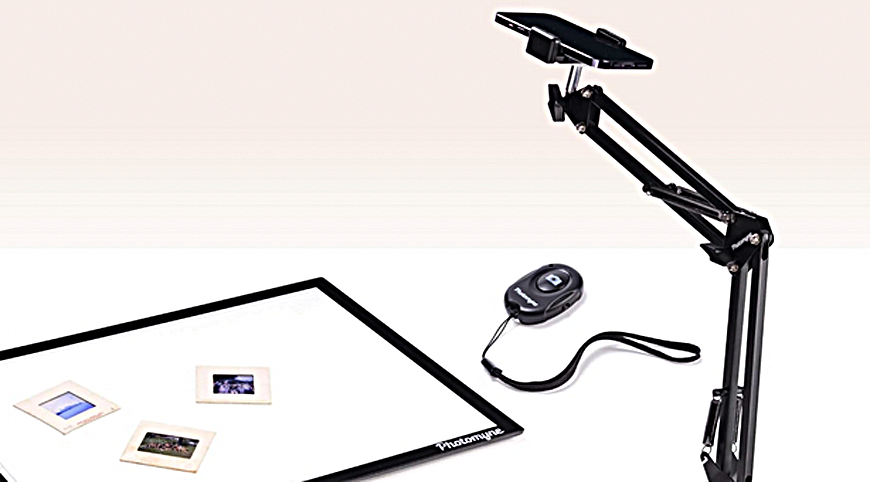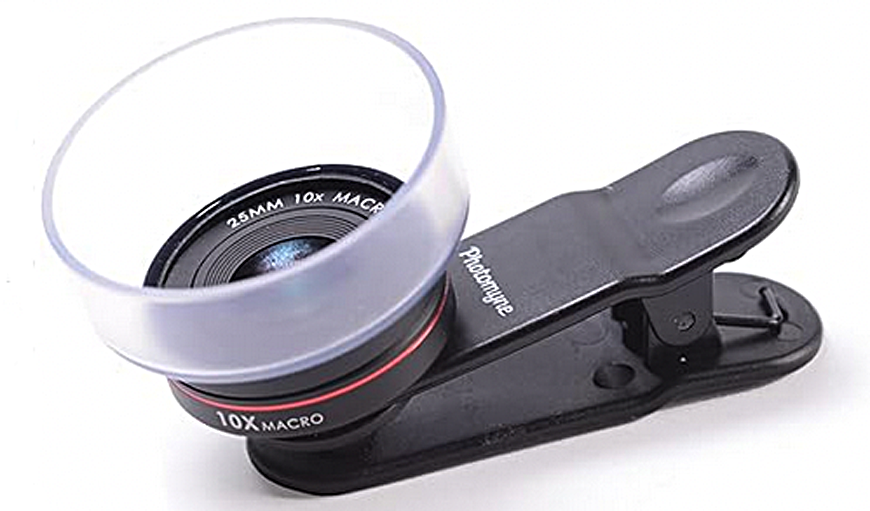Use Your Smartphone to Digitize Old Photos

By ARTHUR H. BLEICH
Chances are you have a bunch of old photos, slides or negatives packed away in a box somewhere just itching to be resurrected into the digital world. Preserving those images is a great way to honor those cherished moments.
There are costly conventional scanners that will do a good job, but are infuriatingly slow. You can also send your images out and have them professionally scanned, but that can also be pricey and there’s always the risk they’ll get lost or damaged in transit. And if you have a combination of prints slides and negatives (black and white and/or color) it just adds to the confusion.
So why not use your smartphone, which you’ve already invested in. There are two ways to do it: copying or scanning and which you choose depends on how you ultimately want to use the results.
If you just want results that can be viewed on a computer, phone or tablet for family and friends to enjoy, you won’t need as much image resolution as you would if you were planning to re-print them in a larger size on your inkjet printer.So scanning them with your phone will do the trick. They’ll display perfectly on any digital devices—phones, tablets or computers— none of which require high resolutions to display images. However, if you want to print those images at a larger size, you’ll usually need more resolution and copying them (instead of scanning) will usually give better results because current-day smartphone sensors usually have much higher resolutions than phone scanning apps provide.

Time to clarify. If you shoot a photo on a smartphone, each image will have millions of pixels of information, more than enough resolution to allow you to output fairly large inkjet prints. But the images captured on a phone scanning app will have lower resolutions, fine for viewing your photos on digital devices and for making reasonably-sized prints. That’s because, unlike most camera exposures which take only fractions of a second,, scanning an image takes time. For example, high end scanners that let you select high resolutions if you need them for big prints can take 15 seconds or more to scan each one, which would really add up if you had lots of o old prints or slides to copy. So smartphone scanning apps use a compromise resolution that allows each scan to be completed in only two to three seconds.
If you decide to scan your old favorites, one of the easiest ways to begin is by using an app called Photomyne, available for both iPhone and Android, which can be downloaded from the App Store or Google Play. It includes the capability to do scans of black and white and color prints and slides. It can also scan orange-colored color negatives and automatically convert them to positive full-color images. And finally, It does a stellar job of auto-coloring black and white prints if you want to try that.
The Photomyne site has a good video that runs you through all the features of the app. There’s also a company store on Amazon that features a few inexpensive accessories that will improve your scan. One of these is a smartphone holder with a flexible gooseneck that allows you to position the phone solidly over whatever you want to scan.
Although you can hand-hold your phone when acquiring your images, it can become a bit awkward since it takes a a few seconds to complete each scan. An interesting feature that comes with the app is its voice-activated shutter release option. This allows you to steady the smartphone with both hands and not have to jab at the shutter release icon. Just say “go” or “shoot” or whatever.

As one app store reviewer remarked about using Photomyne: “During the free trial, I used an iPad for a backlight and handheld the negatives, and got promising but not great results due to pixelation and camera shake. I invested in a small light box and used a phone stand along with the voice control to start scanning. I’ve had excellent results by this method.”
When copying prints be careful to avoid reflections. Lay them on a flat surface or prop them up on a small easel. Place slides and negatives on an inexpensive light box or a white screen on your tablet to illuminate them from underneath An accessory Macrolens with a flexible hood that fits over the lens of most single-lens smartphones can be lowered directly over slides and negatives until it’s in firm contact with the light box surface for rock-steady scans,
Photomyne is free to download, and you can try it out for three days. If you want to keep it, various options are available including (at this time) an introductory subscription offer at $4 a month that includes a free gooseneck phone holder valued at about $30. For an extra buck a month, you can have all your scans automatically stored at Photomyne’s site.
If you have vintage prints and slides you’d like to digitize, Photomyne is a fast, easy and most creative way to do it. And compared to many other scanning options, it’s a lot less expensive. Give it a try!
RESOURCES:
YOU MAY ALSO BE INTERESTED IN READING:
Upscale Photos To Make Stunning Image Blow-Ups
New AI software allows flawless enlargements of low resolution images never before possible.
Original Publication Date: October 22, 2024
Article Last updated: January 13, 2025
Related Posts and Information
Categories
About Photographers
Announcements
Back to Basics
Books and Videos
Cards and Calendars
Commentary
Contests
Displaying Images
Editing for Print
Events
Favorite Photo Locations
Featured Software
Free Stuff
Handy Hardware
How-To-Do-It
Imaging
Inks and Papers
Marketing Images
Monitors
Odds and Ends
Photo Gear and Services
Photo History
Photography
Printer Reviews
Printing
Printing Project Ideas
Red River Paper
Red River Paper Pro
RRP Products
Scanners and Scanning
Success on Paper
Techniques
Techniques
Tips and Tricks
Webinars
Words from the Web
Workshops and Exhibits
all
Archives
January, 2025
December, 2024
November, 2024
October, 2024
September, 2024
August, 2024
July, 2024
June, 2024
May, 2024
more archive dates
archive article list




